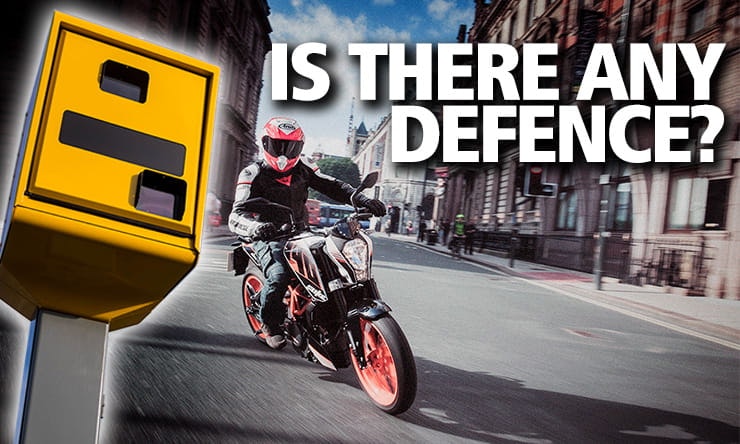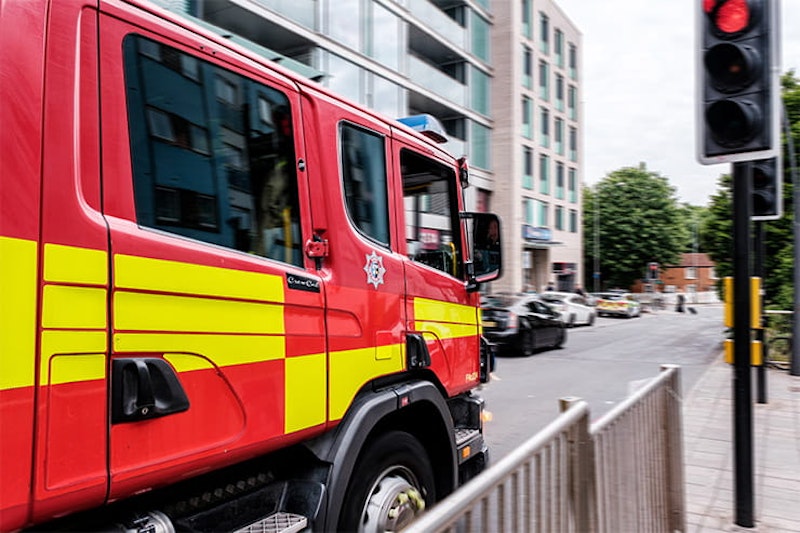Will the police cancel speed camera tickets if you’re being chased?
By Dave Yorke
Freelance journalist
23.03.2023
Speed cameras and traffic light cameras will automatically capture your behaviour. But is it there really a ‘right to flee’? Some riders believe that if they’re being chased they can have any tickets invalidated, but is that true? We asked Dave Yorke, ex-Merseyside Police Sergeant and a motorcyclist himself for the facts…
What happens when a traffic light or speed camera snaps you?
It’s simple really and it’s a mostly automated procedure. Once a camera takes a picture, the image is downloaded and will be assessed as to whether there is readable registration number on the image. Once that’s been determined, a Notice of Intended Prosecution (NIP) will be sent to the registered keeper within 14 days asking them to name the driver of the vehicle at the time of the offence. The registered keeper has 28 days to send it back with the relevant details, and it’s a separate offence to fail to reply to the NIP.
What are the defences to contravening a red light or running a speed camera?
Running a speed camera or a red light is a strict liability offence in that you either did it or didn’t. Saying you didn’t mean to do it won’t cut it, and there are very few defences.
You could try to prove that at the time of the offence that it wasn’t you, or the traffic lights weren’t working correctly and speaking from experience, a police officer reporting a rider at the time of the offence rather than a camera prosecution should also state, for best practice, that – in the case of a red light offence – they observed the traffic lights and they were working correctly at the time of the offence.
Anything else is just mitigation and a rider is left hoping that the police take that into account when deciding whether to prosecute. If they do decide to prosecute, a rider can choose to plead guilty or not guilty at court, but as a strict liability offence, you either did it or you didn’t; a magistrate can only hear mitigation as part of a guilty plea. Anything else is part of defence in a not guilty plea.
Can I go through a red light to let the emergency services past?
No, it’s a simple enough question and one that gets asked a lot. Rule 219 of the Highway Code deals with riders who encounter other vehicles on the road and says: “You should look and listen for ambulances, fire engines, police, doctors or other emergency vehicles using flashing blue, red or green lights and sirens or flashing headlights, or traffic officer and incident support vehicles using flashing amber lights. When one approaches do not panic. Consider the route of such a vehicle and take appropriate action to let it pass, while complying with all traffic signs. If necessary, pull to the side of the road and stop, but try to avoid stopping before the brow of a hill, a bend or narrow section of road. Do not endanger yourself, other road users or pedestrians and avoid mounting the kerb. Do not brake harshly on approach to a junction or roundabout, as a following vehicle may not have the same view as you.”
Don’t consider what you think is morally right; emergency services have their policies and train their drivers to act appropriately when responding to incidents. Those policies don’t include members of the public driving outside of the law, and the organisations usually reinforce it on their websites. It’s the reason that emergency vehicles often turn off their sirens at junctions, so as not to alarm anyone and lead them into situations like contravening red traffic lights.
Incidentally, the same goes for bus lanes and cycle lanes – if you’re in them when you shouldn’t be then you might also get a ticket.
Remember, a siren and flashing lights on an emergency vehicle are only there to warn other road users of the emergency vehicles presence, they’re not giving direction other than those in rule 219.
Can emergency vehicles contravene red lights and speed cameras?
Emergency services in the UK have an exemption to exceed the speed limit, contravene keep left or right signs, and to contravene traffic lights. Whilst they have an exemption, they can still get tickets in the post from traffic light cameras that have snapped them while they’ve been going through a red light and the emergency LED lights have been in such a sequence that the camera has missed all of them.
To combat that, light bars on emergency vehicles now usually show one constant blue light in amongst all the flashing strobe lights to guarantee not being missed by a camera and taking up the fleet manager’s time dealing with hundreds of NIPs.
There are times that emergency drivers, especially the police, won’t show blue lights so as not to alert suspects, but it’s for them to explain why they did it if they get a ticket. Police drivers aren’t exempt from careless or dangerous driving which is something we discussed in our article about police drivers and their immunities.
What about fleeing from criminals?
You’re on your motorbike, it’s dark and you’re on your own. Suddenly a scooter, two up, pulls alongside you and the pillion gets off.
He’s threatening you: he wants to steal your bike.
You ride away and they follow, it looks to you like they’re intent on stealing your bike and as you ride along you approach a traffic light. It’s showing red. A traffic light camera is standing guard waiting to snap anyone crossing the stop line so what do you do and are you even contravening a red light if you do?
In these circumstances, a camera will still take the picture and, in all likelihood a NIP will still be sent to the registered keeper. After replying to the notice a rider would be able to state their mitigation in the hope that the officer in the ticket office won’t prosecute or that the magistrates will accept your mitigation on a guilty plea.
The matter might not get that far though and if I were involved in a situation like this I would be going straight to the police station and reporting the fact there had been an attempted robbery. After all, I’d be in fear, and the fact that I had gone through a red light or a speed camera wouldn’t even register but when the ticket comes through for the red light, I would be able to show that I had reported the attempt robbery at the time of the offence.
Reporting a robbery or other offence is a serious matter and it takes time to be recorded and investigated. The police would want to investigate the attempted robbery and would have pictures to help them because the traffic light camera will have also picked up the scooter and its riders going through the red light to support the investigation. And failing that, there may be other CCTV in the area that will show the incident you’re describing.
I’m pretty sure some people think they can make up any old story to try and get off with contravening a red light, but reporting a crime that didn’t happen is wasting police time under Sec 5(2) of the Criminal Law Act, and a person making a false report could go to prison for up to six months.
So, in the above scenario, you will have contravened a red light if you had gone through it, but it’s how you deal with it is that matters. Waiting until a Notice of Intended Prosecution comes through the post doesn’t really sound that convincing, especially if there’s nothing else to back up your allegation. The same would likely apply if you’d triggered a speed camera.
What are the penalties for contravening a red traffic Light?
There’s a range of penalties that can be applied, a rider could be eligible for a road safety awareness course if they haven’t been on one previously, and failing that, the next step will be a fixed penalty, which will come with three points on a rider’s driving licence and a fine of £100.
It’s important to know that a rider won’t usually be offered a course or a fixed penalty at the roadside – all an officer is doing is reporting a rider for the alleged offence. The decision on how the prosecution goes forward is made by a backroom team and it’s them who will look at the records and decide if the matter should go even further than a fixed penalty and proceed to court.
Going to court and being found guilty could end up with a fine of up to £1,000, and new riders will have to be mindful of the six points in two-year rule, where they will get their licence revoked when reach the magic number.
More seasoned riders already on nine points won’t get offered a fixed penalty either, as they will automatically hit 12 points so they they’ll also be going to court with the prospect of a ban facing them.
Is there such a thing as a ‘right to flee’?
A rider has the right to evade trouble if they are at real risk, but just like police officers who must state a reason when they have used an exemption, a member of the public will have to explain why they’ve contravened a red light or speed camera. The reason will have to be real and not just a made-up excuse made in a phone call to the Old Bill every time a rider makes an error of judgement. It’s far better to accept the punishment, which at the outset can be very light (no pun intended), rather than try to wiggle out of it.

